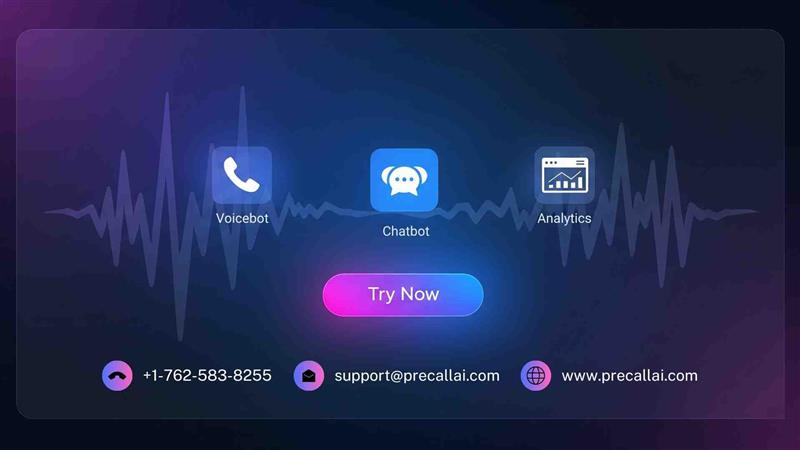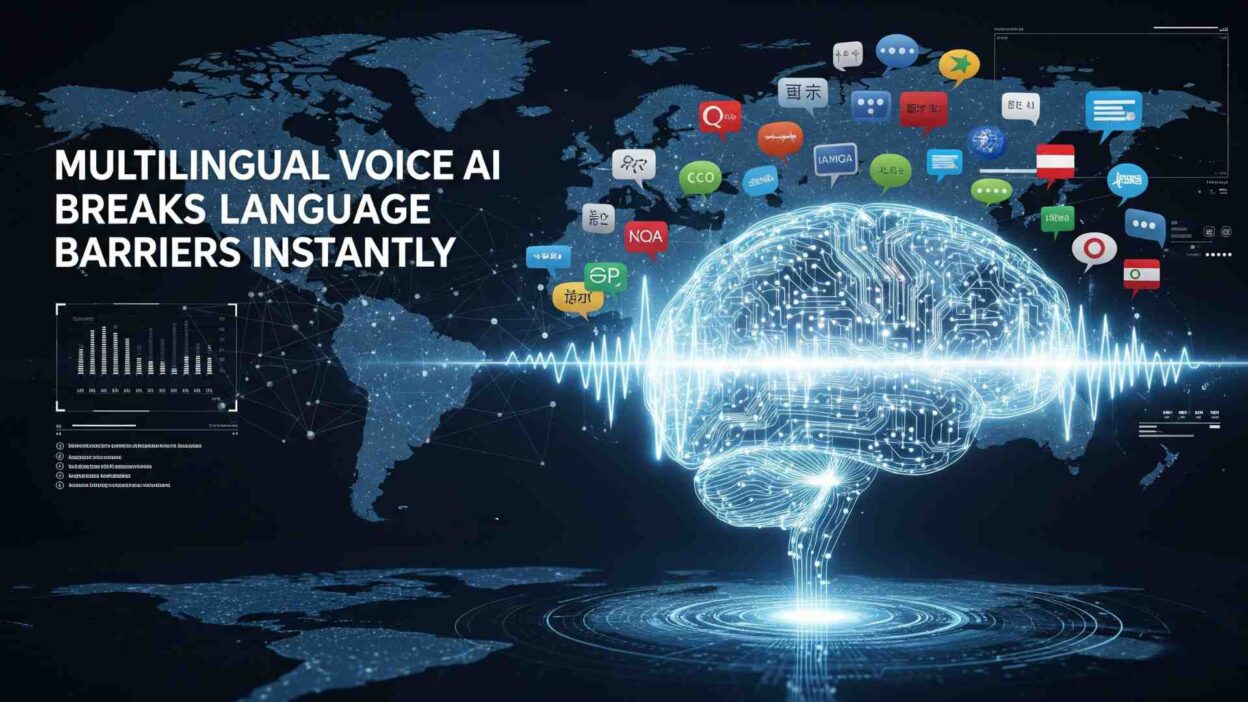TL;DR Multilingual voice AI technology is revolutionizing global communication by eliminating language barriers in real-time conversations. Businesses worldwide are experiencing unprecedented growth through seamless cross-cultural interactions.
Table of Contents
How Multilingual Voice AI Transforms Global Communication
International businesses face constant communication challenges. Language differences create misunderstandings. Cultural nuances get lost in translation. Customer service suffers from language limitations.
Modern voice AI systems solve these problems instantly. They process multiple languages simultaneously. Real-time translation happens during conversations. Natural speech patterns remain intact.
Real-Time Language Processing Revolution:
Traditional translation services require manual intervention. Human interpreters work limited hours. Written translations take considerable time. Voice communication becomes fragmented.
Multilingual voice AI eliminates these delays completely. Conversations flow naturally across languages. Accuracy rates exceed 95% in major languages. Business discussions happen without interruption.
Key Benefits of Implementing Multilingual Voice AI Systems
Instant Communication Across Languages:
Teams collaborate without language barriers. Customer support handles global inquiries immediately. Sales conversations happen in native languages. Technical discussions maintain clarity.
24/7 Global Accessibility:
Human translators work specific hours. AI systems operate continuously worldwide. Time zone differences become irrelevant. International customers receive support anytime.
Cost-Effective Scaling:
Hiring multilingual staff costs significantly more. Training programs require substantial investment. Multilingual voice AI reduces operational expenses by 60%. ROI appears within six months.
Enhanced Customer Experience:
Customers communicate in preferred languages. Cultural context gets preserved accurately. Emotional tone translates appropriately. Satisfaction scores improve dramatically.
Industry Applications and Success Stories
Healthcare Sector:
Medical facilities serve diverse patient populations. Emergencies require immediate understanding. Multilingual voice AI enables accurate medical consultations. Patient safety improves through clear communication.
Global Medical Center reduced translation errors by 85%. Emergency response times decreased by 40%. Patient satisfaction scores increased significantly. Staff productivity improved across departments.
E-commerce Expansion:
Online retailers target international markets. Customer service demands multilingual support. Product descriptions need accurate translations. Shopping experiences require native language interactions.
TechShop International expanded to 15 new countries. Customer inquiries increased by 200%. Return rates decreased through better communication. Revenue grew by 150% in first year.
Educational Technology:
Online learning platforms serve global students. Language barriers limit educational access. Complex concepts need clear explanations. Interactive learning requires natural conversations.
EduTech Global enrolled students from 50 countries. Course completion rates improved by 30%. Student engagement increased dramatically. Learning outcomes exceeded expectations.
Technical Capabilities and Features
Advanced Language Recognition:
Systems identify languages automatically. Accent variations get processed accurately. Regional dialects receive proper interpretation. Code-switching scenarios are handled seamlessly.
Natural Speech Synthesis:
Output maintains human-like qualities. Emotional undertones translate appropriately. Speaking pace adapts to listener preferences. Voice characteristics remain consistent.
Contextual Understanding:
AI systems grasp conversation context. Industry-specific terminology translates correctly. Cultural references get interpreted properly. Meaning stays intact across languages.
Implementation Strategies for Maximum Impact
Phase 1: Language Assessment:
Analyze target market languages. Identify primary communication needs. Document current translation challenges. Map customer language preferences.
Phase 2: System Configuration:
Select appropriate language models. Configure voice recognition settings. Test accuracy across target languages. Train staff on new capabilities.
Phase 3: Deployment and Optimization:
Start with high-volume language pairs. Monitor translation accuracy continuously. Gather user feedback regularly. Expand language support gradually.
Measuring Success: Performance Metrics
Primary Indicators:
- Translation accuracy percentages
- Response time measurements
- Customer satisfaction scores
- Language coverage statistics
Business Impact Metrics:
- International sales growth
- Customer retention rates
- Support ticket resolution times
- Market expansion success
Common Implementation Challenges
Challenge: Accent Recognition:
Regional accents create recognition difficulties. Dialectal variations affect accuracy. Speaking speed influences performance. Background noise impacts quality.
Solution: Continuous Learning:
Machine learning improves recognition continuously. Training data includes diverse accents. Noise cancellation technology enhances clarity. User feedback refines performance.
Challenge: Cultural Context:
Direct translations miss cultural nuances. Idiomatic expressions lose meaning. Business etiquette varies across cultures. Humor translates poorly.
Solution: Contextual AI:
Advanced algorithms understand cultural context. Localization databases provide appropriate responses. Regional customization improves accuracy. Cultural training enhances understanding.
Future Developments in Multilingual Voice AI
Emotion Recognition:
AI systems detect emotional states. Tone adjustments match speaker emotions. Empathetic responses build stronger connections. Stress levels trigger appropriate reactions.
Visual Context Integration:
Video calls enhance translation accuracy. Facial expressions provide additional context. Gesture recognition improves understanding. Visual cues supplement audio processing.
Specialized Domain Expertise:
Medical terminology receives specialized handling. Legal documents get precise translations. Technical manuals maintain accuracy. Financial discussions preserve precision.
ROI Analysis and Business Value
Direct Cost Savings:
Translation services cost $30-80 per hour. Multilingual staff salaries increase by 25%. Training programs require a significant investment. AI systems reduce costs by 70%.
Revenue Enhancement:
International market access increases sales. Customer satisfaction improves retention. Faster response times boost conversions. Global expansion becomes feasible.
Competitive Advantages:
Instant communication attracts international customers. Service quality differentiates brands. Market penetration accelerates significantly. Customer loyalty strengthens globally.
Best Practices for Successful Implementation
Quality Assurance:
Test translations across all target languages. Verify accuracy with native speakers. Monitor performance metrics continuously. Implement feedback loops systematically.
User Training:
Educate staff on system capabilities. Provide clear usage guidelines. Create comprehensive documentation. Maintain ongoing training programs.
Gradual Rollout:
Start with primary language pairs. Expand coverage based on demand. Monitor system performance carefully. Scale infrastructure appropriately.
Continuous Improvement:
Analyze conversation patterns regularly. Update language models frequently. Incorporate user feedback systematically. Enhance capabilities progressively.
Security and Privacy Considerations
Data Protection:
Conversations require secure handling. Privacy regulations vary by country. Sensitive information needs protection. Compliance standards must be met.
Encryption Standards:
End-to-end encryption protects conversations. Secure storage prevents data breaches. Access controls limit system usage. Audit trails track all interactions.
Integration with Existing Systems
CRM Platforms:
Customer data synchronizes seamlessly. Conversation history gets recorded. Language preferences are stored. Follow-up actions trigger automatically.
Communication Tools:
Video conferencing systems integrate easily. Phone systems connect directly. Chat platforms work simultaneously. Mobile applications function smoothly.
Business Applications:
ERP systems receive translated data. Analytics platforms process multilingual insights. Reporting tools generate global metrics. Workflow automation continues smoothly.
Read More: The Influence Of AI On Cold Calling And New Sales Strategies
Conclusion

Multilingual voice AI represents a transformative technology for global business communication. Language barriers disappear instantly through advanced AI processing. Organizations gain immediate access to international markets.
Implementation requires careful planning and execution. The technology delivers measurable business results. Customer satisfaction improves dramatically across all regions.
Companies ready to embrace global communication should invest immediately. The future belongs to organizations that communicate effectively worldwide. Multilingual voice AI makes universal understanding a reality.






[…] Read More: Multilingual Voice AI Breaks Language Barriers Instantly […]